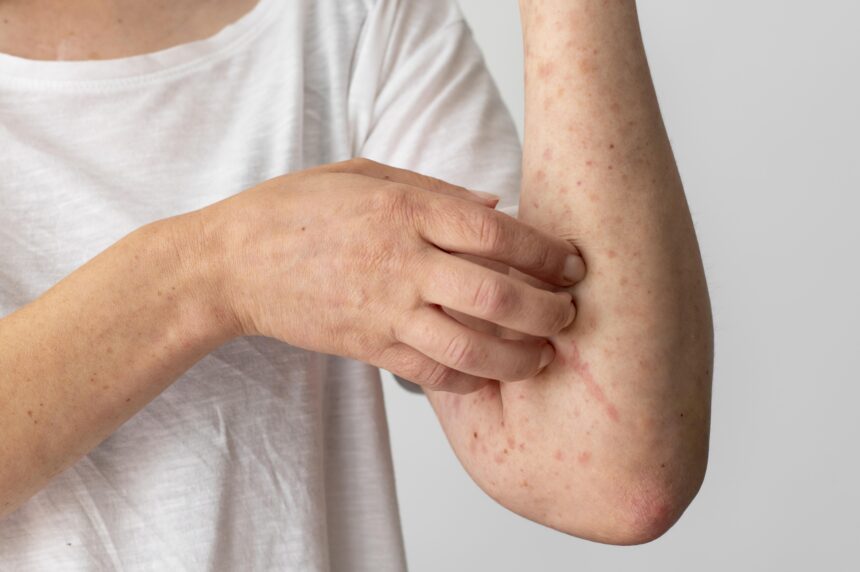Food allergies can affect people of all ages, causing mild discomfort or severe reactions that require immediate medical attention. Understanding the signs and symptoms of food allergies is crucial for prompt diagnosis and effective management. Here’s a comprehensive guide to help you recognize and respond to food allergies:
Common Signs and Symptoms
Skin Reactions:
- Hives: Raised, itchy bumps on the skin.
- Eczema: Persistent dry, itchy patches of skin.
- Swelling: Especially around the lips, tongue, or face.
Gastrointestinal Symptoms:
- Abdominal Pain: Cramping or discomfort.
- Diarrhea: Sudden onset after eating.
- Nausea and Vomiting: Often occur rapidly after consuming allergenic food.
Respiratory Issues:
- Runny or Congested Nose: Sometimes accompanied by sneezing.
- Shortness of Breath: Particularly in severe cases.
- Wheezing: Audible breathing difficulty.
Cardiovascular Symptoms:
- Palpitations: Irregular or rapid heartbeat.
- Weak Pulse: Especially during an allergic reaction.
Systemic Reactions:
- Anaphylaxis: A severe, potentially life-threatening reaction characterized by a combination of symptoms such as difficulty breathing, swelling of the throat, rapid pulse, dizziness, and loss of consciousness. Anaphylaxis requires immediate medical attention.
Identifying Potential Allergens
Common food allergens include:
- Peanuts
- Tree nuts (such as walnuts or almonds)
- Shellfish
- Fish
- Milk
- Eggs
- Wheat
- Soy
- Sesame
Diagnosis and Management
If you suspect a food allergy, consult a healthcare professional for proper diagnosis and management. Diagnosis typically involves:
- Medical History: Discussing symptoms and potential triggers.
- Physical Examination: Checking for physical signs of allergies.
- Allergy Testing: Skin prick tests, blood tests, and oral food challenges may be used to identify specific allergens.
Steps for Managing Food Allergies
- Avoidance: Once identified, avoid allergenic foods completely.
- Emergency Plan: Develop and carry an emergency action plan, especially for severe allergies like anaphylaxis.
- Medication: Antihistamines and epinephrine auto-injectors (such as EpiPen) may be prescribed for immediate treatment of reactions.
- Education: Educate yourself and those around you (family, friends, caregivers) about the signs and management of food allergies.
Recognizing the signs of food allergies is crucial for timely intervention and prevention of severe reactions. By understanding common symptoms, identifying allergens, and having a management plan in place, individuals with food allergies can lead safer and healthier lives. Always seek medical advice for proper diagnosis and personalized management strategies.
Remember, early recognition and appropriate action can make a significant difference in managing food allergies effectively.










